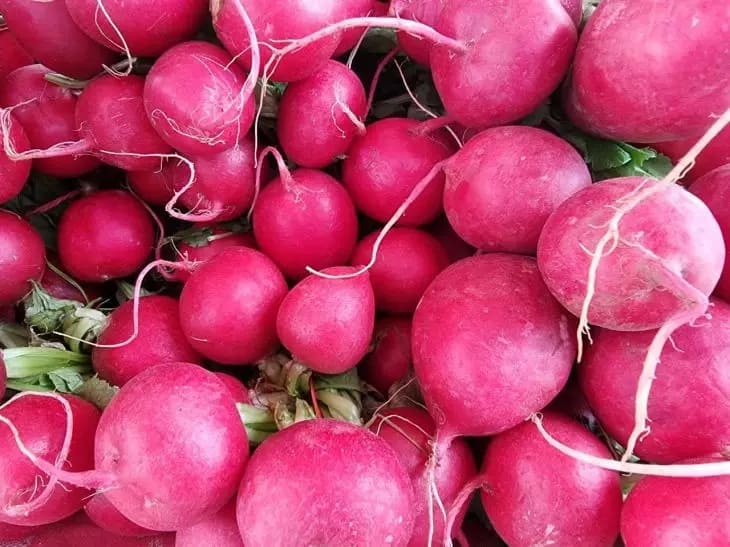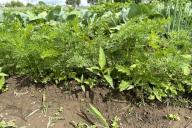Radish is a vegetable that can be grown in open ground and in a greenhouse. It is rich in vitamins and improves health.
But for the radish to be large and sweet, you need to take care of it. Feeding the radish is especially important.
Fertilizing radishes is adding nutrients to the soil or to the leaves of plants. Fertilizing radishes is necessary in order to:
- accelerate the growth of root crops;
- increase their size and mass;
- improve their quality and taste;
- prevent diseases and pests.
Radish is fed with chemical fertilizers or folk remedies. If you overdo it with fertilizers, the radish will be small and bitter.
When and how to feed radishes
Fertilizing radishes is carried out at different stages of its cultivation.

- Before sowing seeds. At this stage, you need to prepare the soil for planting radishes. To do this, you can add organic or mineral fertilizers, such as humus, superphosphate, potassium sulfate or ash.
- After emergence. At this stage, it is necessary to support the plants during the period of growth of leaves and roots. For this, you can use complex mineral fertilizers, for example, azofoska, nitroammophoska or other similar preparations. Top dressing is done 10-14 days after emergence, watering the plants under the root.
- At the end of the root crop growth, when it has already reached the desired size and roundness, you can add potassium-phosphorus fertilizer, which will improve the quality and taste of the fruit. For example, you can use superphosphate or potassium salt. Top dressing is done 10-14 days after the second top dressing, watering the plants under the root.
Folk remedies for feeding radishes
If you do not want to use chemical fertilizers to feed radishes, you can prepare folk remedies from available and safe ingredients. Here are some of them.
- Ash. It is rich in potassium, phosphorus and other microelements. Ash can be simply sprinkled on the garden bed or made into an infusion: 1 glass of ash is poured with 10 liters of water and infused for 3 days. Then it is filtered and the plants are watered at the roots.
- Herbal infusions. They contain vitamins and enzymes. Any herbs can be used to prepare herbal infusions: nettle, dandelion, burdock, etc. The grass is crushed and filled with water in a ratio of 1:10 (fresh) or 1:20 (dry). Infuse for 7-10 days, stirring occasionally. Then dilute the infusion with water in a ratio of 1:5 and water the plants at the roots.
- Litter. This is an effective organic fertilizer that contains nitrogen, phosphorus, potassium and other elements. But the litter should be diluted with water in a ratio of 1:15 (chicken) or 1:20 (rabbit) and infused for 3-4 days. Then strain and water the plants at the root.
- Yeast. This is a popular folk remedy for feeding radishes, which stimulates growth and improves plant immunity. To prepare a yeast solution, dilute 10 g of fresh or 5 g of dry yeast in 10 liters of warm water and add 3 tablespoons of sugar. Infuse for 2-3 hours and water the plants at the root.
Fertilizing radishes is a simple and effective way to get a large and tasty harvest of this vegetable.








